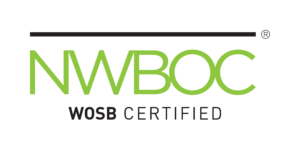Did you know most resumes are thrown out before a human ever sees them? Before an application passes into human hands, it first must pass the test of an applicant tracking system — a system whose job is to toss underqualified resumes in seconds.
We’re here to help you make sense of ATS and bot-friendly resumes. Read on to learn more about ATS resume writing and the best way to ensure your application reaches the people who can make your career dreams a reality.
What Is an ATS Resume Filter?
An applicant tracking system (ATS) is software used to automate the resume ranking process. This software sorts, scans, reads and ranks job applications to weed out unqualified candidates, throwing many resumes away before they even reach human eyes. Large corporations and government organizations that receive hundreds of resumes per open position often use an ATS to shorten the recruitment process.
An ATS saves organizations significant time on manual reviews. However, it also means you may be overlooked if you don’t optimize your resume to rank well in ATS software.
Writing for Both Software and People
Optimizing your resume for an ATS is crucial. But ATS software isn’t the only thing you’ll need to consider. Both the ATS and real people must be able to consume your resume. After all, your goal is to pass through the ATS to be seen by a human hiring manager.
Don’t sacrifice your resume’s core readability, grammar, spelling, punctuation or formatting for ATS optimization. Instead, write with a human audience in mind while also formatting your resume in a way an ATS can understand.
ATS Resume Tips
Keep these tips in mind to make sure your resume is easy for human eyes to read while remaining ATS-compliant:
- Keep Your Format Clear and Readable: ATS software is limited in what it can understand. While intricate custom resume templates may wow a prospective employer, the bot will throw them away due to confusion. Instead, use a clean, simple design free of charts, pictures and custom fonts.
- Use the Appropriate File Type: Unless the job description specifies a preferred file type, it’s best to submit your resume in a Word document format, such as a .doc or .docx. Not all ATS software can read PDFs properly, leaving information scrambled or skipping over essential data.
- Don’t Use Images That Contain Critical Information: Leave vital details such as your contact information and work experience in plain sight of both bots and people. Avoid using images to convey these essential details.
- Include Contact Information Clearly at the Top of Your Resume: Not many systems can read applications’ headers or footers. Write your contact information clearly at the top of the resume’s body rather than in one of these often-overlooked areas. You do not have to display your home address, adding the city and state in which you live is appropriate.
- Customize With Keywords: Keyword optimization is one of the best ways to write for both hiring managers and ATS bots. Mirror the verbiage written on the job description in your resume, and use action verbs to detail your skills.
Leave Your Executive Resume Writing to the Professionals at SES Resume Writers
Writing for both an ATS and hiring staff is a delicate process. Rather than taking the risk of writing your resume on your own, contact the professionals at SES Resume Writers.
We’ve written more than 65,000 resumes with a high interview rate, so we know what it takes to beat the bots and get your application into human hands. Contact us today to request your free consultation and quote.


